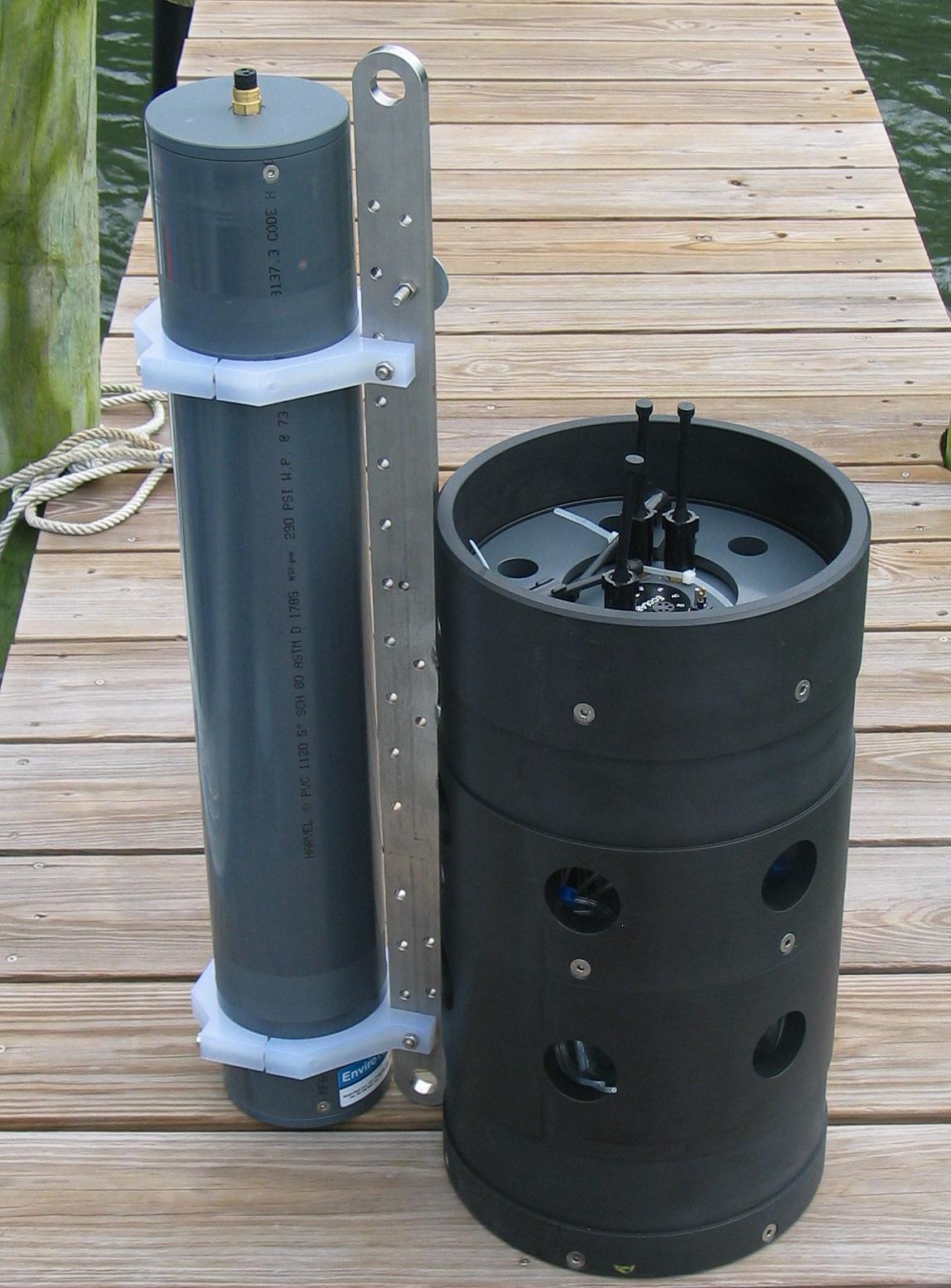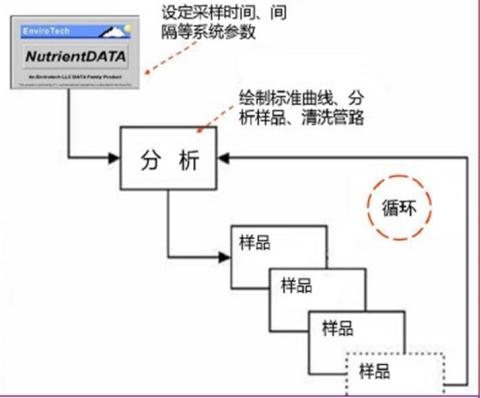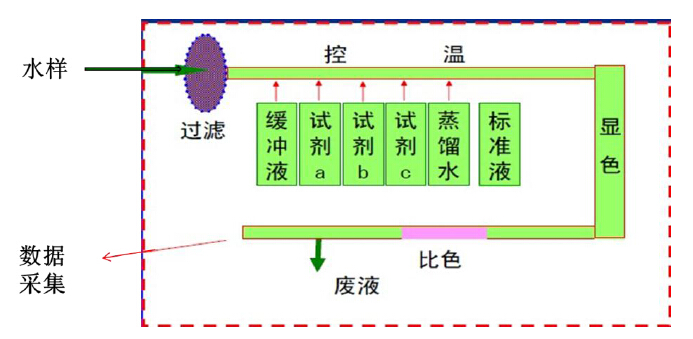Introduction | |||||
| EcoLABII is an in-situ chemical analyzer based on wet chemistry methods.Accurate injection volume, ship calibration, reagent connection to rotary valves combined with syringe pump and photometer analysis.EcoLABII is essentially an underwater chemical analysis robot.The sample data is calibrated by ship standard fluid and can be analyzed in situ according to the intervals set by the user. The volume, mixing time and cleaning of the sample and reagent are directly controlled by macro commands that can be set by the user.Custom commands can be customized by the user or GreenEyes to achieve specific QC quality control or analysis goals. |  | ||||
| Main functions | |||||
| EcoLAB II is the latest multi-channel underwater in situ nutrient analysis system based on wet chemical analysis methods, which can be used in all natural water bodies. It is a powerful tool for long-term online monitoring of water quality, and can monitor 1 to 3 nutrient indicators simultaneously. | |||||
| EcoLAB II can be easily integrated into field test stations, anchoring devices or water surface buoys for online monitoring.Data is stored in the instrument memory card or remotely transmitted, and a wireless transmission module can be optionally equipped.It is widely used in the monitoring of water bodies such as oceans, lakes, rivers, etc. | |||||
| EcoLAB II standard configurations can be used to measure ammonia nitrogen, nitrates, phosphates and silicates in situ underwater using laboratory methods. | |||||
| Instrument features | |||||
| 1. Underwater in situ long-term monitoring, standard working depth is 50m, low-precision 100m, and monitoring time is up to 2 months. | |||||
| 2. 1 to 3 nutrient indicators can be monitored simultaneously | |||||
| 3. Various power supply methods (solar energy, batteries, desktop power supplies) to ensure that the instrument adapts to different monitoring environments | |||||
| 4. It can be placed on field test monitoring stations, anchoring devices or water surface floats to monitor water quality changes for a long time.It can also be used on board as a small mobile chemical experimental station. | |||||
| 5. The consumption of reagents is very small, and the cost of later use is very low. |  | ||||
| 6. Multiple functions ensure accurate and reliable data | |||||
| A: The instrument has stable performance | |||||
| B: EPA / n EMIStandard Method | |||||
| C: The standard sample is corrected at any time for the baseline drift of the instrument | |||||
| D: Automatic backflushing procedure ensures that the injection system is not easy to block and resists biocorrosion | |||||
| 7. Various power supply methods to ensure the long-term work of the instrument and adapt to different monitoring environments | |||||
| 8. Data can be transmitted wirelessly and at high frequency/Real-time monitoring of water quality changes | |||||
| 9. Low maintenance cost | |||||
| Basic Principles | |||||
| Sequential Injection Analysis Technique (SIA) |  | ||||
Sequential injection analysis is a solution treatment and analysis method with simple flow paths and easy to automatically control.Through the action of the syringe pump, the liquid enters the tube cavity of the syringe pump in a certain order from different channels, and then the mixed liquid is pushed into the detector to complete the color development and colorization at a constant temperature.The rotary valve always keeps only one channel in the open state and the remaining seven channels in the closed state at the same time.The system installation software settings make the water samples and reagents arrive at the reaction tube in sequence, and then enter the detector for testing after reaction. | |||||
 | |||||
 | |||||
| Sequential injection analysis diagram | |||||
| Parameter determination method (refer to EPA/NEMI standard method) | |||||
no2-:Sulphonamide-naphthaleneethylenediamine hydrochloride method (540nm) | |||||
| no3-: Cadmium column reduction method to NO2-(540 then) | |||||
| NH4+: Sodium salicylate method (surface water) (660nm) | |||||
| Sodium phenol method (sea water) (630nm) | |||||
| PO43+: Phosphorus-molybdenum blue colorimetric method (880nm) | |||||
| SiO32-:Silicon-molybdenum blue colorimetric method (810nm) | |||||
| Technical parameters | |||||
| Anchor and reagent rack can be configured.Eco lab IICan be placed on a cloth on a float or on a ship. | |||||
| size(clever) and weight (kg) | |||||
| Analyzer:50 small 16 (longSmallMaximum outer diameter) | |||||
| Reagent holder:56 small 32 (longSmallOuter path) | |||||
| Battery Pack:88 Small 14 (longSmallOuter path) | |||||
| weight:In the air25,In the water4(Not weight of reagent) | |||||
Analysis parameters | |||||
| scope(Detection limit-Linear range): | |||||
High sensitivity detector: | Low sensitivity detector: | ||||
| no3-: 0.2-50 μmol; (0.003-0.7 mg/L) | no3-:0.8- 100μmol;(0.01-1.4 United States/l) | ||||
| no2-: 0.15-35μmol; (0.002-0.5 mg/L) | no2-:0.6-75μmol;(0.008-1.0 United States/l) | ||||
| PO43-: 0.2-25μmol; (0.006-0.7mg/L) | PO43-:1.5-50μmol;(0.05-1.5 US/l) | ||||
| NH4+: 0.3-20μmol; (0.004-0.3 mg/L) | NH4+:1.5-40μmol; (0.02-0.4 United States/l) | ||||
SiO32-: 0.3-60μmol; (0.009-2.0mg/L) | SiO32-:1.5-100μmol; (0.05-3.0 US/l) | ||||
| Extended range: Set up automatic dilution program, the detection range can be up to the maximum5 US/l. | |||||
| Accuracy:no3-:1.5 % F.S. | |||||
| no2-:1% F.S.; | |||||
| PO43-:2% F.S.; | |||||
| NH4+:2% F.S.; | |||||
| SiO32-:1.5% F.S. | |||||
Accuracy: Based on the correct storage of the onboard calibration fluid and the sample repetition accuracy. | |||||
| analyze:Each channel can be analyzed for each channel for each channel each time1000A sample.It mainly depends on the dose and reagent quality. | |||||
| Note: The detection limit is blank for reagents3Calculate the standard variance,The linear range depends on the optical path and chemical reaction of the detector. | |||||
| For more parameter information, please contact us directly. | |||||
| General parameters | |||||
| powered by:DC10-15V, current (MA)maximum300, dormant state0.1,averagetwenty two | |||||
| communication:RS232 19200,N,8,1 | |||||
| Maximum depth:50 No, other depths can be customized. | |||||
| Application areas | |||||
| 1. Monitoring and management of water quality (river, lake, reservoir, water source, seawater, estuary) | |||||
| 2. Maximum total daily load(TM DL) Research | |||||
| 3. Eutrophication Research | |||||
| 4. Agricultural runoff research | |||||
| 5. The body of water you are interested in | |||||
| Origin: United StatesGreene yes | |||||